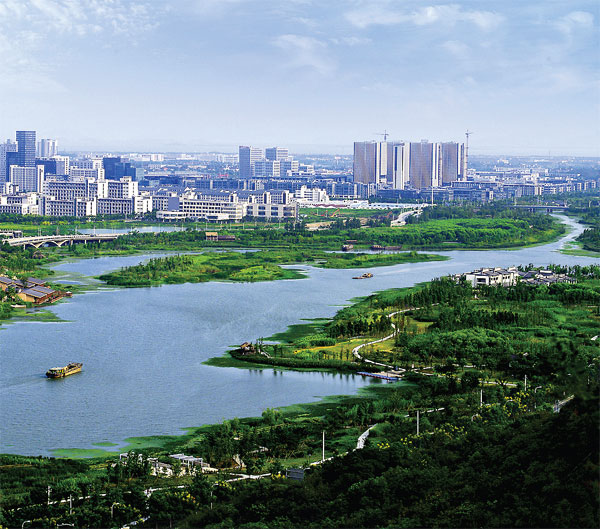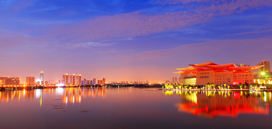Wuxi: Canal city in transition
Updated: 2014-09-13
 |
|
Wuxi, with its beautiful environment and great talent pool, has turned out to be magnet for investors from both home and abroad. |
However, it is a different world now. Knowledge is power and the most important resource is talent.
For the last few years, besides spending generously on Jiangnan University and on building its "university city", Wuxi has been mining skilled people and innovations from anywhere, by any means.
One way has been to encourage foreign investors, primarily by the local government's long-term commitment, to branch out their research and development operations.
Caterpillar, the world's leading manufacturer of heavy-duty equipment and engines, launched its largest R&D facility outside the United States in Wuxi in 2005, with a staff of some 700. The facility was completed in three phases.
In another example, Swiss-based family enterprise Buhler AG, a specialist manufacturer of food processing equipment, also has an R&D center in Wuxi, where teams from China and the company's headquarters work on new products and solutions.
A second method has been to build facilities for the nation's top-notch universities and individual scientists to commercialize their lab innovations. These facilities are called research institutes, but differ vastly from institutions carrying the same designation in Beijing and Shanghai. Their purpose is to connect the owners of the innovations with local companies capable of implementing them on a large scale. Some research institutes are invested in directly by companies but all have received generous subsidies from the local government.
Yuqi, a former People's Commune, is a township with a population of close to 100,000. In 2011, it already boasted two listed companies and some 100 enterprises able to generate more than 10 million yuan in yearly sales. Now Yuqi has built a research institute for new materials for the Harbin Institute of Technology, a leading Chinese engineering university.
"We have many companies on this street that can implement our lab solutions," said Professor Bai Yongping from HIT. "A good business environment is what we are after and new technologies are what the businesses want."
One research institute built by Wuxi's Huishan district is a joint effort with the Wuhan-based Huazhong University of Science and Technology. One of the first lab solutions it commercialized was digitalized processing of precision machine parts, said Ding Han, dean of the HUST school of mechanical science and engineering.
A third way to remain at the leading edge is to buy technologies and import technological and managerial talent from all over China and the world.
Tel:0510-81178873
E-mail:haiyulu@163.com


